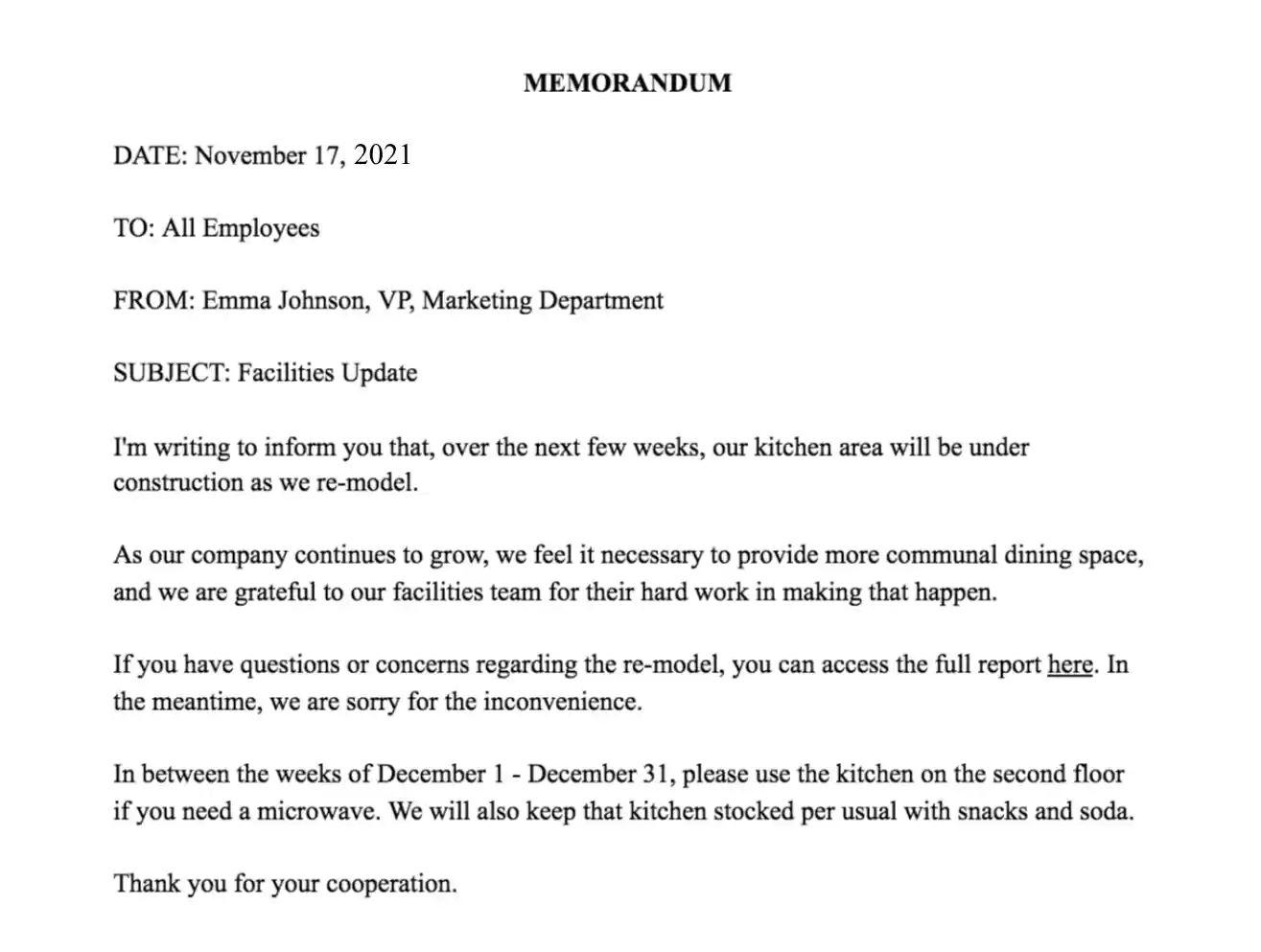How to CC a Business Letter to Multiple Parties

Unlike a pitch deck, which can be taken out of context, an investment memo stands on its own and provides complete context. Investors often receive many investment memos, allowing them to compare companies and make better investment decisions. They often use financial ratios to make these comparisons across companies. Ideas and suggestions memos are employed to convey innovative concepts or proposals. Often, managers request input from their subordinates to address specific problems, prompting the need for such memos.
Psychological Barriers in Communication
The distribution list indicates who else should receive a copy of the letter in addition to the direct recipient. In English business letters, this list is referred to as carbon copy. The term dates back to the time when carbon paper was utilised for copies of a document. An instructional memo should close as crisply as it opens.
Context
Circulars typically have multiple topics and calls to action. Memos are usually used for internal communications, while press releases are intended for external communications. A press release is understood to typically be a longer, more detailed document than a memo. The closing section is an opportunity to end your memo on a courteous note. We recommend you share what you want your recipients to take action on one more time here, as well. The aim of this portion is to persuade the recipients to follow your recommended actions.
Providing Transparency in Communication
If you send your memo as a letter or fax, include these after the last page of your memo document. Memos streamline information flow within the startup, enabling efficient communication of instructions, updates, and challenges. Startups benefit from using memos to announce policy changes, share project updates, outline business plans, and seek funding opportunities. Effective memos cc on a memo are essential for successful internal communication in any organization. This is particularly crucial for startups, where well-crafted memos can present strategic visions, business strategies, and investment rationale to potential investors. For venture capital investors, investment memos play a crucial role as supporting documents in their investment decision-making process.
Making the wrong choice can be a breach of professional courtesy and land you out-of-favor with your boss or coworkers. A gifted teacher, Lynn has led writing classes at more than 100 companies and organizations such as MasterCard, Microsoft, Boeing, Nintendo, REI, AARP, Ledcor, and Kaiser Permanente. Near her home in Seattle, Washington, she has taught managerial communications in the MBA programs of the University of Washington and UW Bothell. She has created a communications course, Business Writing That Builds Relationships, and provides the curriculum at no cost to college instructors. In terms of formatting, the note is left-justified and positioned directly below the term for enclosures.
- If you send an envelope stuffed full of enclosures to a busy business executive, the odds are good that it will end up in their wastepaper basket or the office paper recycling.
- You should use cc in an email to loop in stakeholders, new participants, and large groups of people who need to see the email you’re sending.
- Be as personable as the relationship with your reader allows while respecting the hierarchical strata within your company.
- With this feature, you can make sure all interested parties get a copy of an important letter, and you can also keep your own files updated at all times.

The typist’s initials, of course, are not a required element if the signer of the letter also typed it. The point is to alert the person who has received the letter that others directly involved with the letter have also been copied on it. Reading memo examples can help you get a better idea of how to craft your own.
Let us—and your fellow SBOs—know by sharing a comment below. A memo’s format is typically informal (but still all-business) and public. Memos typically make announcements, discuss procedures, report on company activities, and disseminate employee information. If you have something confidential to communicate, don’t do it in a memo.
At minimum, a business memo should include a heading (which contains the to and from information), a date, a subject line, and the actual message of the memo. While a template can help you write a well-structured memo, it’s important to make it your own. Be it the writing style, the visual aspect, or the information itself, business communication is most effective when it’s personalized. You should use cc in an email to loop in stakeholders, new participants, and large groups of people who need to see the email you’re sending. You can also use cc to introduce a new coworker, add your manager to an important email chain, or communicate a significant project change to your whole team.
This information should always be shared first to clearly communicate the change. Despite the structured format, a memo is flexible enough to convey different types of messages. Understandably, the message will likely look different depending on the topic at hand.
For this reason, adding a “cc” to a professional business memo requires respecting the workplace hierarchy. For longer memos, consider writing short headings that clarify the content of each category. For example, instead of stating “Policies,” write “New policies regarding part-time employees.” Be specific and brief in every heading so that the basic point of your memo is apparent to the reader right away.
The literal meaning of the word memorandum is a note to assist the memory. The same goes for writing IN ALL CAPS or using exclamation points, especially if the memorandum is conveying news that may upset people. In law, a memorandum is a record of the terms of a transaction or contract, such as a policy memo, memorandum of understanding, memorandum of agreement, or memorandum of association. Other memorandum formats include briefing notes, reports, letters, or binders. In business, a memo is typically used by firms for internal communication, while letters are typically for external communication.
